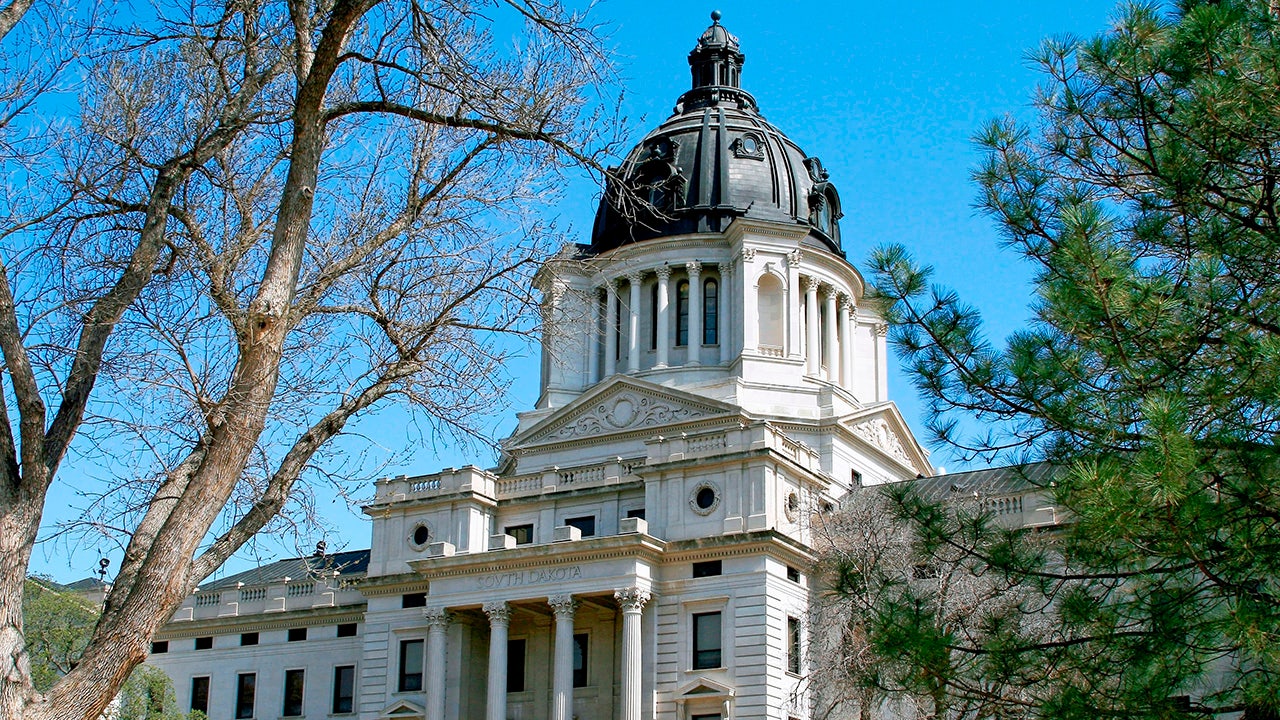Texas
Anti-Israel activists vandalize Texas congressman's office door

Anti-Israel activists sprayed fake blood on the door of Texas Congressman John Carter’s Georgetown office, he claimed on Monday.
“Free Gaza” was spray-painted in red on the ground in front of the door.
“Unhinged anti-Israel activists vandalized my Georgetown office. Let me make 2 things clear: my support for Israel is unwavering & your intimidation won’t work,” Carter wrote on social media.
“Secondly, the parties responsible will be found and will be prosecuted to the fullest extent of the law.”

Texas
New Texas/Southeast Asian/Mexican Barbecue Truck Opens With Peppercorn Brisket and Roti-Wrapped Sausages

Modern Chinese restaurant Zoé Tong opened its new barbecue truck this past weekend. Si Baby-Q debuted at 1530 Barton Springs Road in the Zilker neighborhood on Saturday, May 4.
Si Baby-Q’s menu is Texas barbecue with Mexican and Southeast Asian takes. The food is informed by the backgrounds of co-owner Simone Tong and pitmaster Jonathan Lagos, who are respectively Mexican American and Singaporean.
That means smoked meats available by weight, such as brisket made with Indonesian long peppercorns and pulled lamb shoulders with mala spices. Then there’s Esquites Chinos, Mexican street corn with queso fresco, sesame seeds, and mala spices; Queso y Pepe, where egg noodles are served with queso and long peppercorns; and the SXSE Smoked Chicken where the curried chicken leg is served with roti.
Other items include sandwiches like the brisket on a toasted pretzel bun or the Hog Duvet, a sausage on roti. There’s also a take on Frito pie with a spicy dan dan sauce. Desserts include cinnamon rolls made out of croissant dough and a cream cheese glaze. For drinks, the truck will serve a variety of beers, canned wines, and sodas. Scope out the menu below.
:no_upscale()/cdn.vox-cdn.com/uploads/chorus_asset/file/25435680/ZoeTong.SiBabyQMSK_0954.jpg)
:no_upscale()/cdn.vox-cdn.com/uploads/chorus_asset/file/25435682/ZoeTong.SiBabyQMSK_0964.jpg)
:no_upscale()/cdn.vox-cdn.com/uploads/chorus_asset/file/25435685/ZoeTong.SiBabyQMSK_0955.jpg)
Zoé Tong co-owners Tong and Matthew Hyland wanted to offer smoked meats at the restaurant since they already had an on-site smoker courtesy of one of the address’s predecessors, Uncle Billy’s. They were connected to Lagos, who was the pitmaster of Terry Black’s Barbecue. While working together, Lagos mentioned he wanted to open his own food truck, hence Si Baby-Q.
Zoé Tong opened in November 2023. Before Austin, the couple were working in New York, where Tong ran Chinese American wine restaurant Silver Apricot and Hyland was part of the team behind pizzeria Emily and Emmy Squared.
:no_upscale()/cdn.vox-cdn.com/uploads/chorus_asset/file/25435687/ZoeTong.SiBabyQMSK_0937.jpg)
Texas
These 10 buildings define Texas architecture
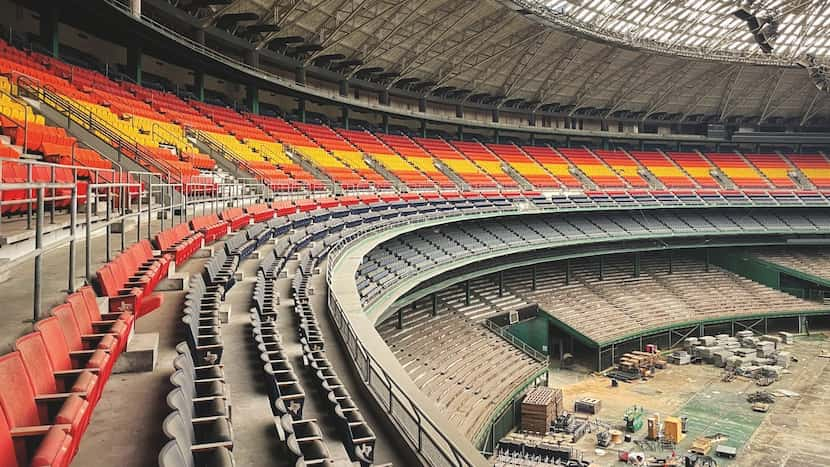
“I am large, I contain multitudes,” wrote Walt Whitman. He was talking about himself, but the words apply equally to the architecture of Texas. I have a substantial library on the subject — monographs, guidebooks, essay collections, scholarly studies, photographic compilations — and not one of those books might be considered definitive. Home, Heat, Money, God: Texas and Modern Architecture (University of Texas Press, $45) gets about as close as any. A chunky, colorful pleasure, it is the work of historian Kathryn E. O’Rourke, who provides the text, and the architect and critic Ben Koush, who supplies the photographs.
Like the state it chronicles, it is sprawling and somewhat unwieldy. The authors describe it as a “partial survey,” which seems about right. It is less a comprehensive history than a critical narrative, one that isolates the various forces that have shaped the state’s architecture from the 1920s to the present. The focus is on those suggested by its wonderful title: the meanings of home, the challenges of climate and the pressures of money and religion. But these are hardly its only themes; an alternate title might have been “Hubris, Highways, Segregation and Demolition.”
“Relentless ambition, a forward-looking attitude, and a strong sense of place combined to make Texans particularly receptive to modern architecture’s implication of newness, its future-oriented image, and its capacity to reinterpret historical forms in novel ways,” O’Rourke writes. “Modern buildings were used repeatedly as signs and symbols of cosmopolitanism and of Texan readiness to take a starring role in any number of dramas.”
O’Rourke’s text, which is thorough and clear-eyed if a bit dry, is buoyed throughout by Koush’s photographs, which balance the clinical perfectionism of a trained architect with a rich sense of humanity.
From Amarillo to Wharton, the authors have traveled across the state, documenting works of all scales and typologies, from grand civic projects to humble roadside attractions.
The book includes more than 20 projects in Dallas, ranging from the moderne icons of Fair Park to the golden neo-modernism of the Campbell Centre. Many of the projects examined here will be familiar, but what makes the book so enjoyable (and an essential component of its argument) are those that are less so. Koush and O’Rourke have an admirable taste not just for the state’s conventionally “important” architecture but also for the vernacular and idiosyncratic.
A few samples follow.
Rosenwald School, West Columbia, 1921
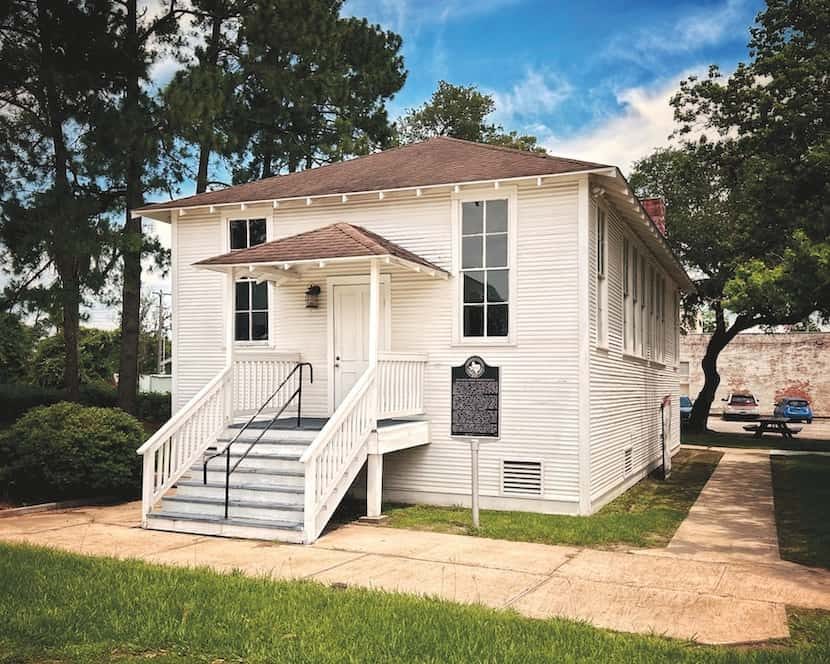
The book begins with the juxtaposition of two schools from the inter-war period; the sprawling Lamar High School, in Houston’s upscale and then race-restricted River Oaks, and this rural Rosenwald School, one of more than 5,000 schools for Black children built in the South and funded in large part by the Jewish philanthropist Julius Rosenwald. “Seen together,” O’Rourke writes, the two schools “lay bare the ways architecture operates within, as well as reflects and often sustains, social and economic structures.”
Kraigher House, Brownsville, 1937
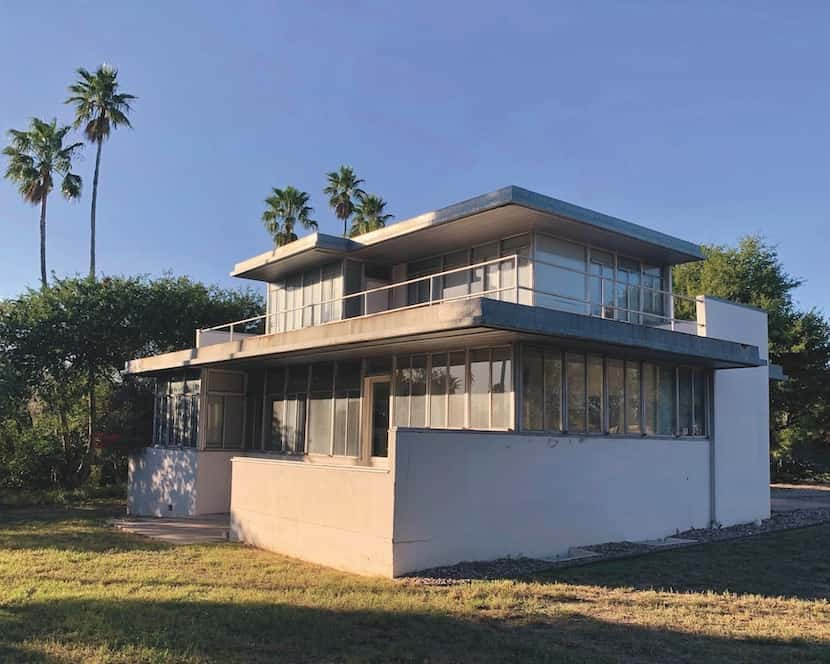
Among the state’s earliest modern houses, and among the first designed by a name-brand European-born modern architect, the Kraigher House was built by Richard Neutra in Brownsville, not normally considered a hotbed of avant-garde design. With its unadorned planar geometry, it is a rare example of the International Style in Texas.
Tee Pee Motel, Wharton, 1947

The authors’ interest in vernacular building is illustrated by this roadside icon of 11 concrete structures modeled on American Indian shelters. The Tee Pee Motel, O’Rourke writes, “typified romantic fascination with indigenous culture on the part of white entrepreneurs.”
The Tap Lounge and Restaurant, El Paso, 1956
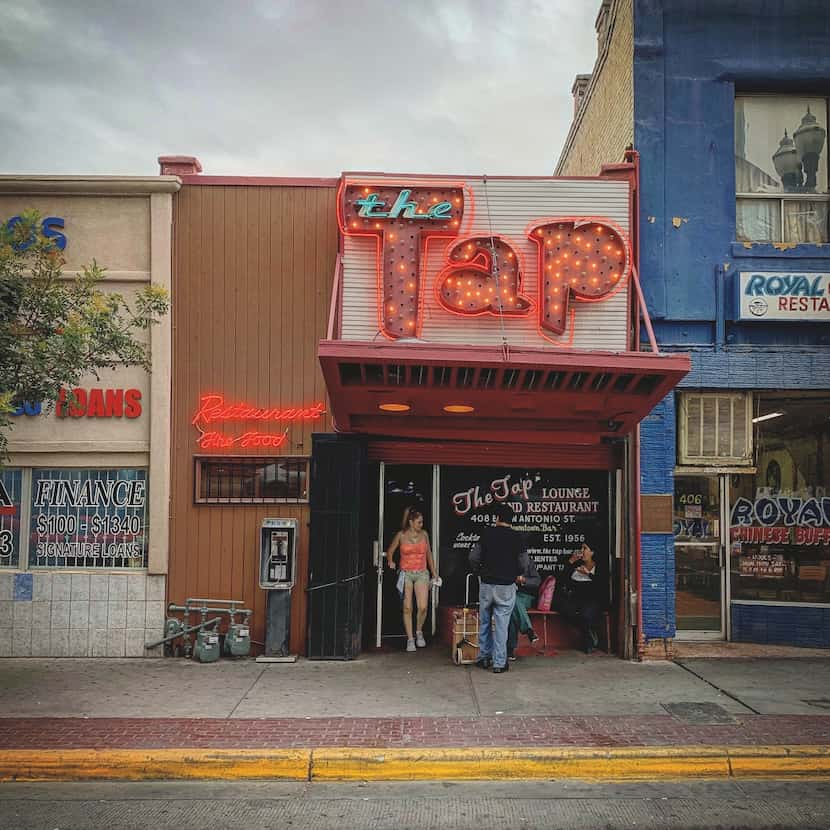
“A case study in the power of neon” this El Paso dive is a joyful exemplar of mid-century Texas commercial architecture.
Cigarroa Medical Building, Laredo, 1960

In the midcentury, Texas architects developed all manner of sun screens, or brises-soleil, as a means of heat mitigation. This distinctive example, with purple tiles on an undulating wall of parabolic arches, was designed by McAllen-based architect Max E. Burkhart Jr.
Zion Lutheran Church, Abilene, 1963
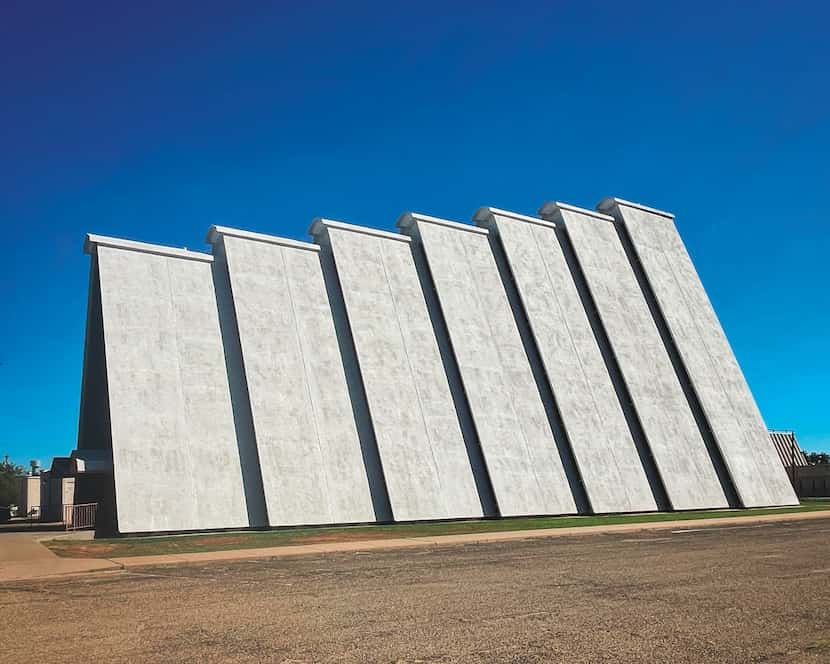
Triangular forms became a staple of ecclesiastical Texas architecture in the 1960s. Outside, the bold geometry commanded attention; inside, the angled shapes suggested the heaven-pointing architecture of Gothic cathedrals. This example, now the Galilee Baptist Church, is a dramatic telescoping A-frame.
Dallas Trade Mart, 1959

Banal on the outside, from within the Dallas Trade Mart is a sky-lit wonder of catwalks and open-air arcades and courts. Built as a wholesale marketing center for developer Trammell Crow by the architects Harwell Hamilton Harris and Harold A. Berry, it “anticipated the new generation of air-conditioned shopping malls just being introduced in Texan suburbs in the early 1960s.”
Martin Luther King Jr. Humanities Center, Houston, 1969
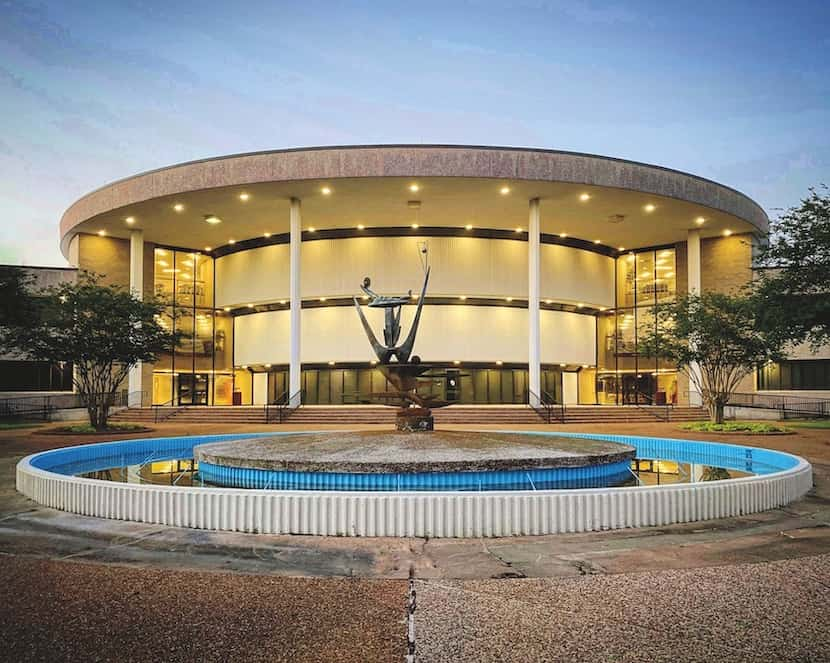
The King Humanities Center at Texas Southern University, defined by its swooping, semi-circular front portico, was the work of John S. Chase, the first African American man to receive an architectural degree from the University of Texas and the first to become a registered architect in the state.
Carnegie Branch Library, Houston, 1982
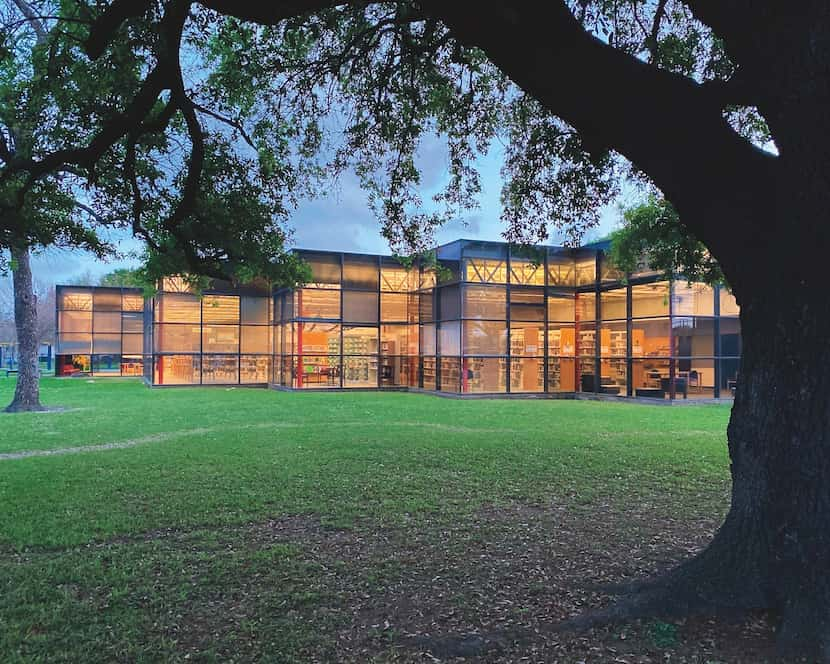
This elegant and technically sophisticated high-modern library, designed by Ray Bailey Architects, features glazed walls and an exposed structural truss system, recalling earlier Houston works by Ludwig Mies van der Rohe and Philip Johnson.
Texas
Video: Floodwaters Inundate Texas

new video loaded: Floodwaters Inundate Texas
transcript
transcript
Floodwaters Inundate Texas
Residents in parts of Southeast Texas waded through waist-high water as rescue efforts were underway.
-
Rescue worker: “We all right here?” OK, you good? Yeah.
Recent episodes in Extreme Weather
-

 News1 week ago
News1 week agoBoth sides prepare as Florida's six-week abortion ban is set to take effect Wednesday
-

 Politics1 week ago
Politics1 week agoColumbia University’s policy-making senate votes for resolution calling to investigate school’s leadership
-

 Politics1 week ago
Politics1 week agoGOP Rep. Bill Posey won't seek re-election, endorses former Florida Senate President as replacement
-

 World1 week ago
World1 week agoBrussels, my love? MEPs check out of Strasbourg after 5 eventful years
-

 World1 week ago
World1 week agoRussian forces gained partial control of Donetsk's Ocheretyne town
-

 Politics1 week ago
Politics1 week agoHouse Republicans brace for spring legislative sprint with one less GOP vote
-

 World1 week ago
World1 week agoAt least four dead in US after dozens of tornadoes rip through Oklahoma
-

 Politics1 week ago
Politics1 week agoAnti-Trump DA's no-show at debate leaves challenger facing off against empty podium


/cdn.vox-cdn.com/uploads/chorus_asset/file/25436323/Super_Famicom_prototype.jpeg)

